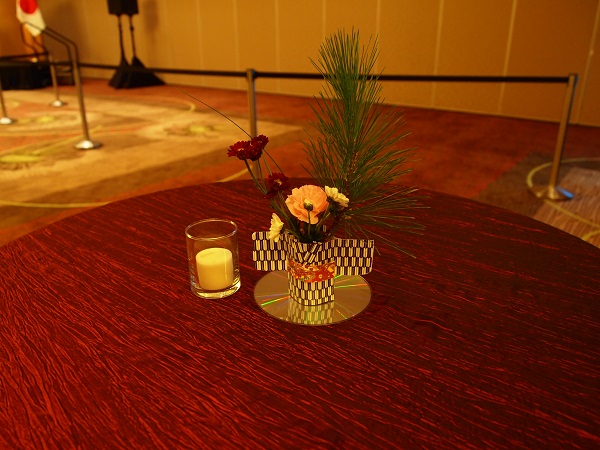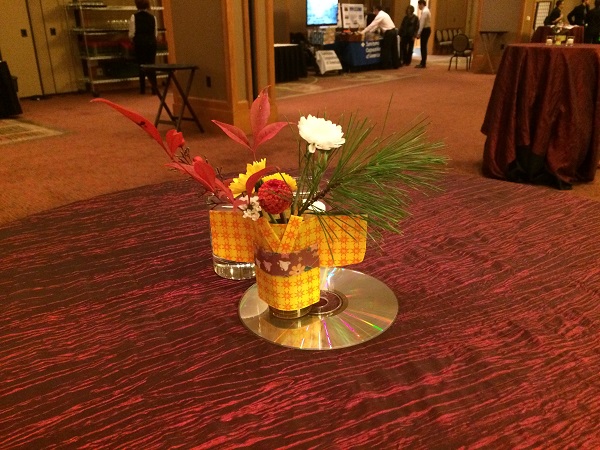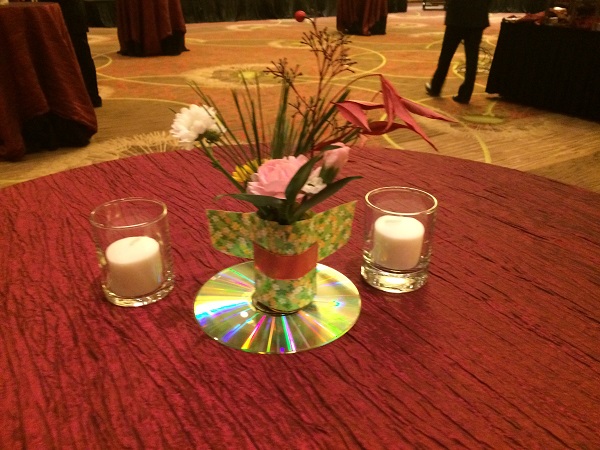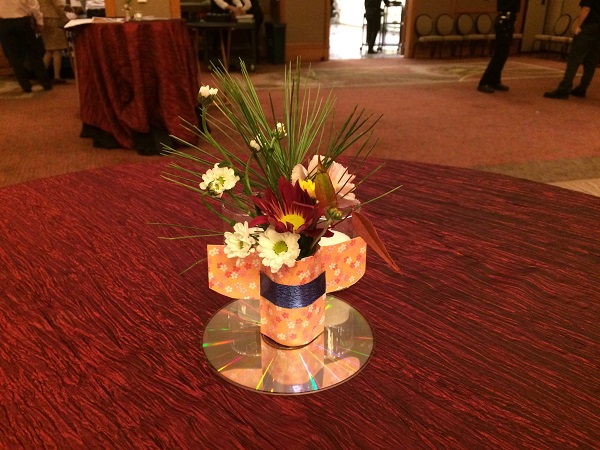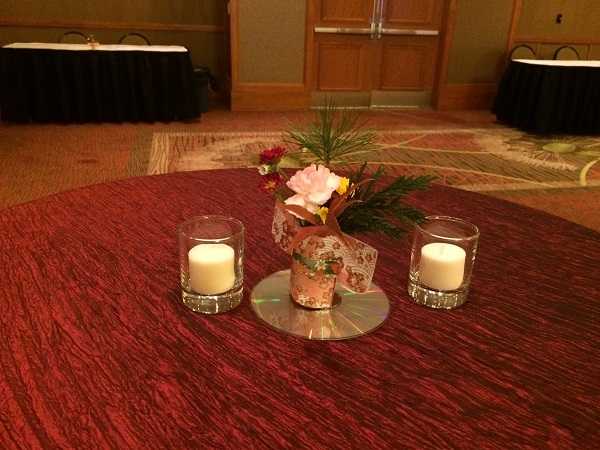Every December, Consulate General of Japan holds an annual party at Sheraton Denver Downtown Hotel. It is a time to thank the good relationship between local officers, business people, and others with Japan. The event is also called the Emperor’s Birthday Party, commemorating the current emperor’s birthday on December 23rd.
Through Ikebana International Denver Chapter (#66), one of senior teachers from three of Japanese Ikebana Schools, Sogetsu, Ohara and Ikenobo, are asked to present flower arrangements for this event by Consulate General of Japan, taking turns every three years.
This year was my turn. Three years ago, I had a Rikka Sunamono arrangement.
Rikka Sunamono flower arrangement at the Year-end Party held by Consulate General of Japan at Denver – December 2nd, 2011
This year, I had an inspiration from the Emperor and his wife as a couple, who turned 81 years old and 80 respectively.
To show the respect for the Emperor couple, I had prepared the Awase-Shin Rikka, which uses two different types of pines combined for Sugu-Shin, the middle tall pine(s), and is presented at a formal, happy occasion such as a wedding ceremony. “Awase-Shin” means the “Combined, Coupled, Together, United”. Normally in Japan, Black Pine as a symbol for male and Red Pine as a symbol for female are used to construct the “Awase-Shin”. But, in Colorado, I used the local Ponderosa pine and Mugo pine for this arrangement because I could not obtain Black and Red pines.
I hope this combination-arrangement shows the respect for the Emperor couple and wishes both Emperor’s and his wife’s longevity.
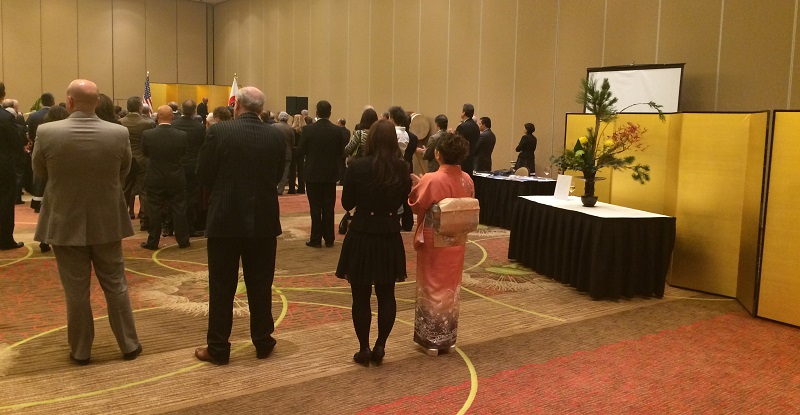
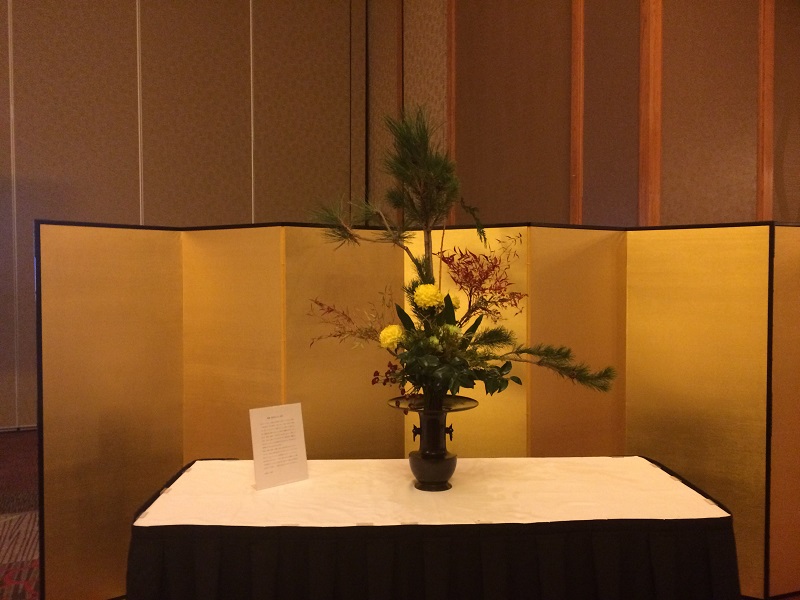

By the way, the vase used is from Edo Era (1603-1868) of Japan, and is probably from mid-to-late Edo Era. The vase is probably about 250 years old.
Other arrangements presented are:
Center pieces for food tables, with the tall bamboo vases so that the flowers/leaves do not interfere with people who move alongside the tables.
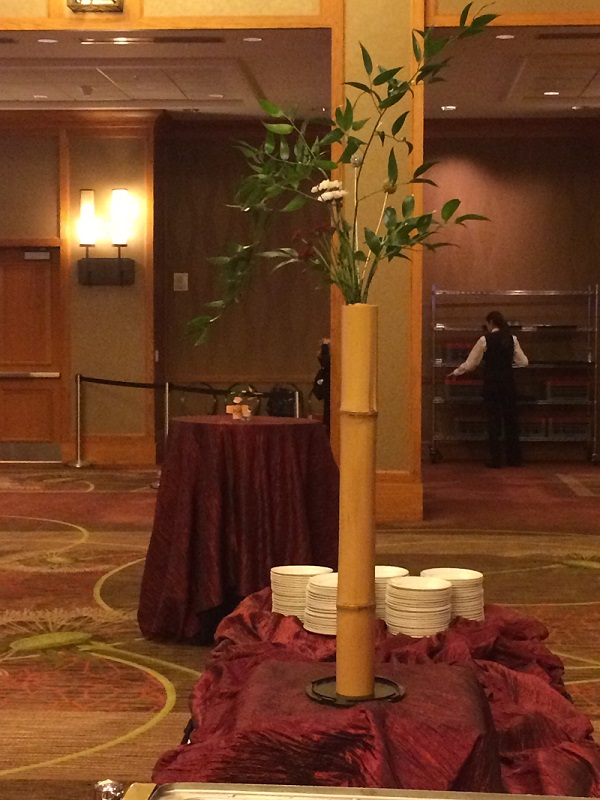
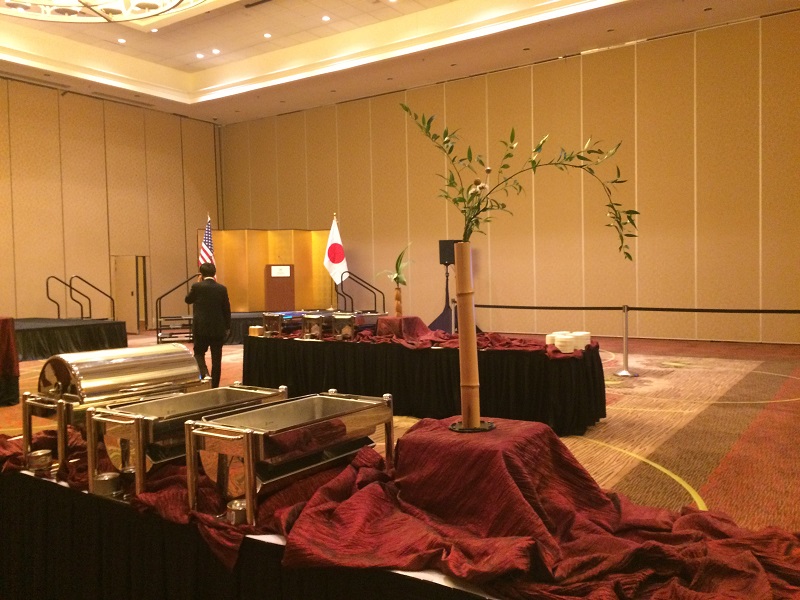
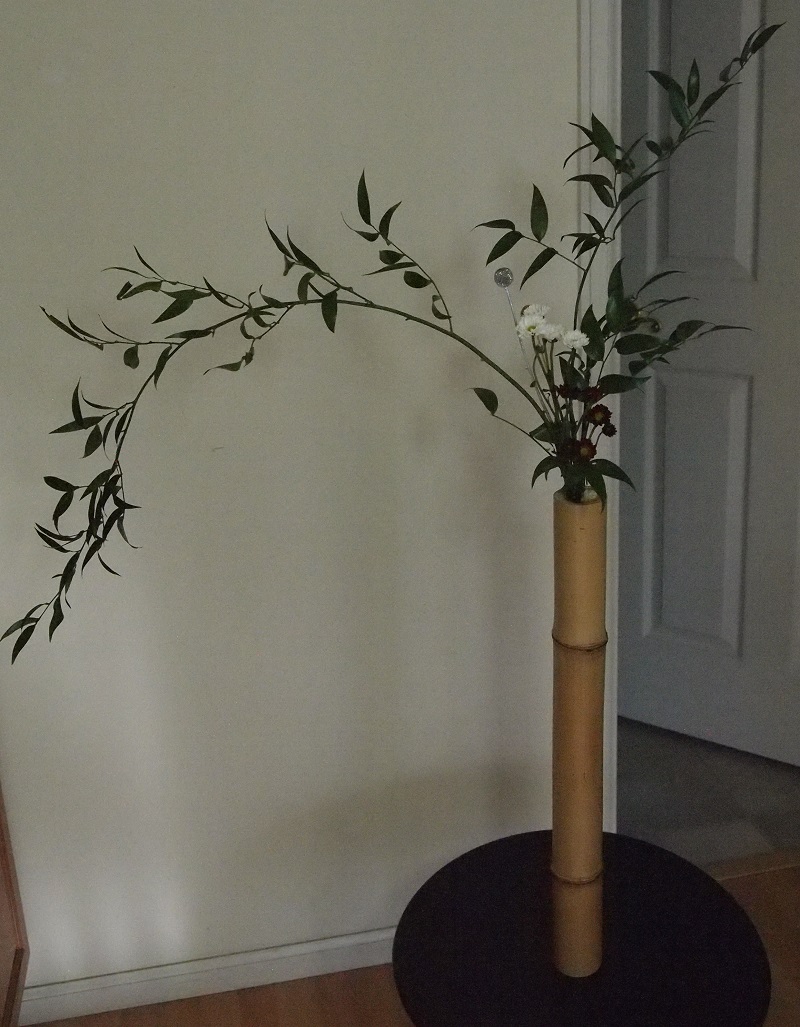
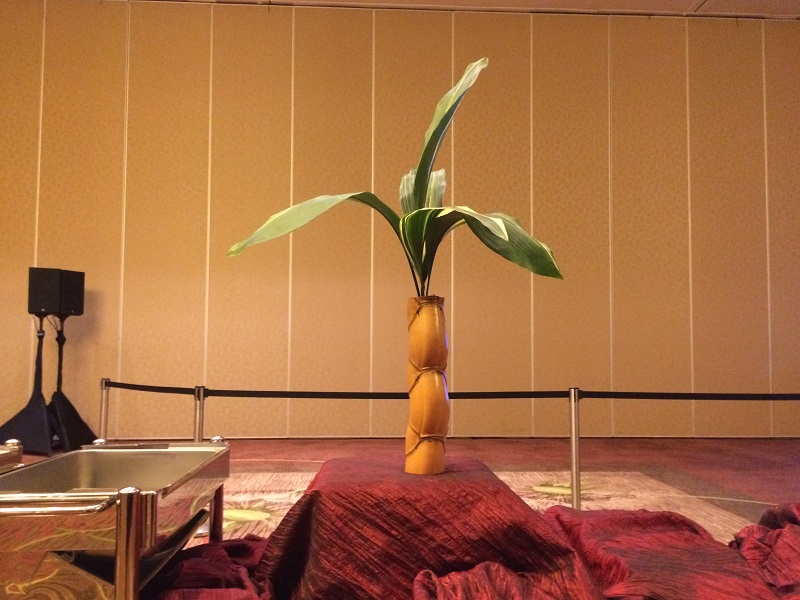
Pieces for reception desks:
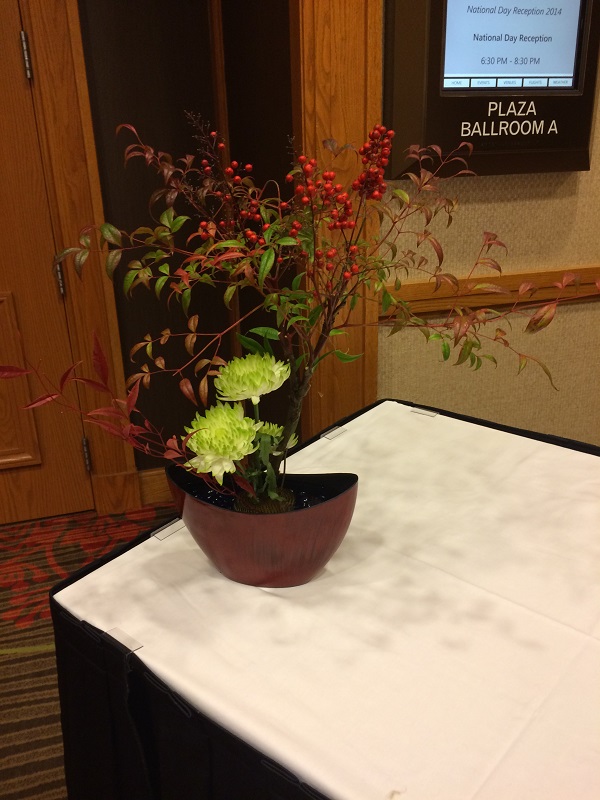
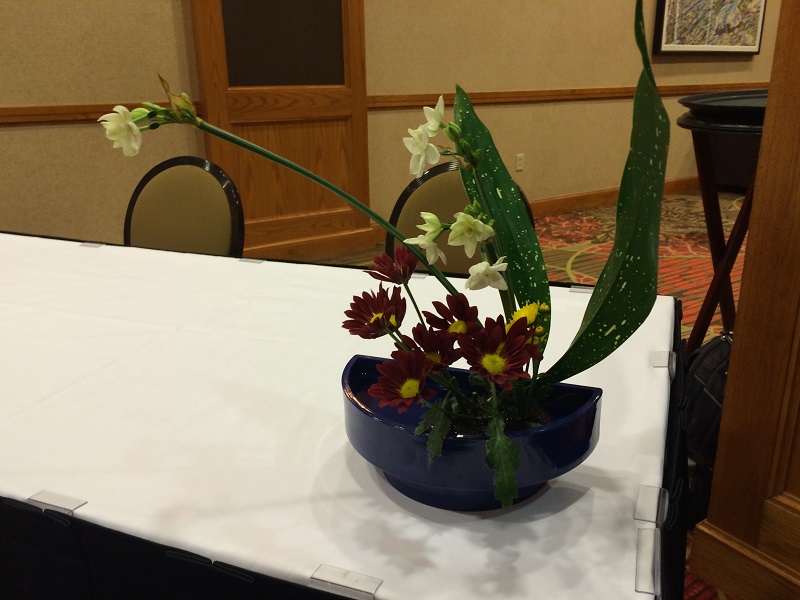
And, about more than a dozen of small arrangements for tables. The Kimono-style exterior were made with thick Chiyogami (Origami) paper. The inside is either 35-mm film cases (which is hard to obtain these days due to popularity of digital cameras) or small prescription pill bottles. I also placed the back of the used computer CD discs below the arrangements for visual effects.
